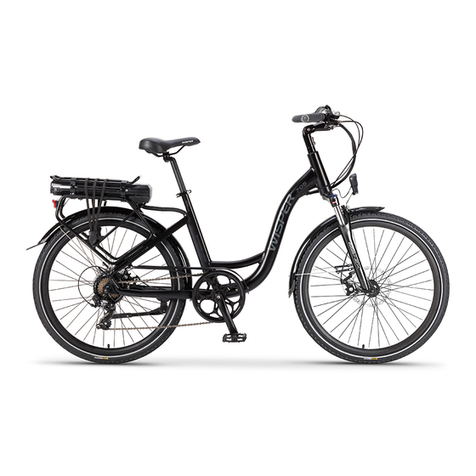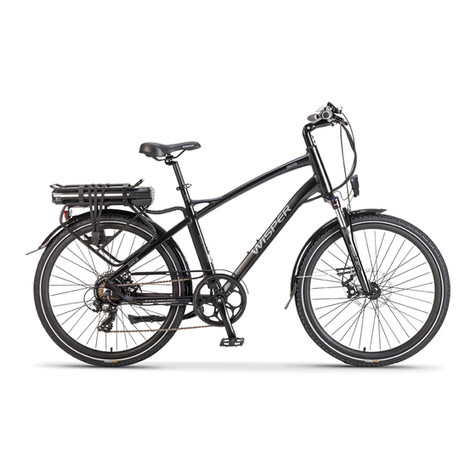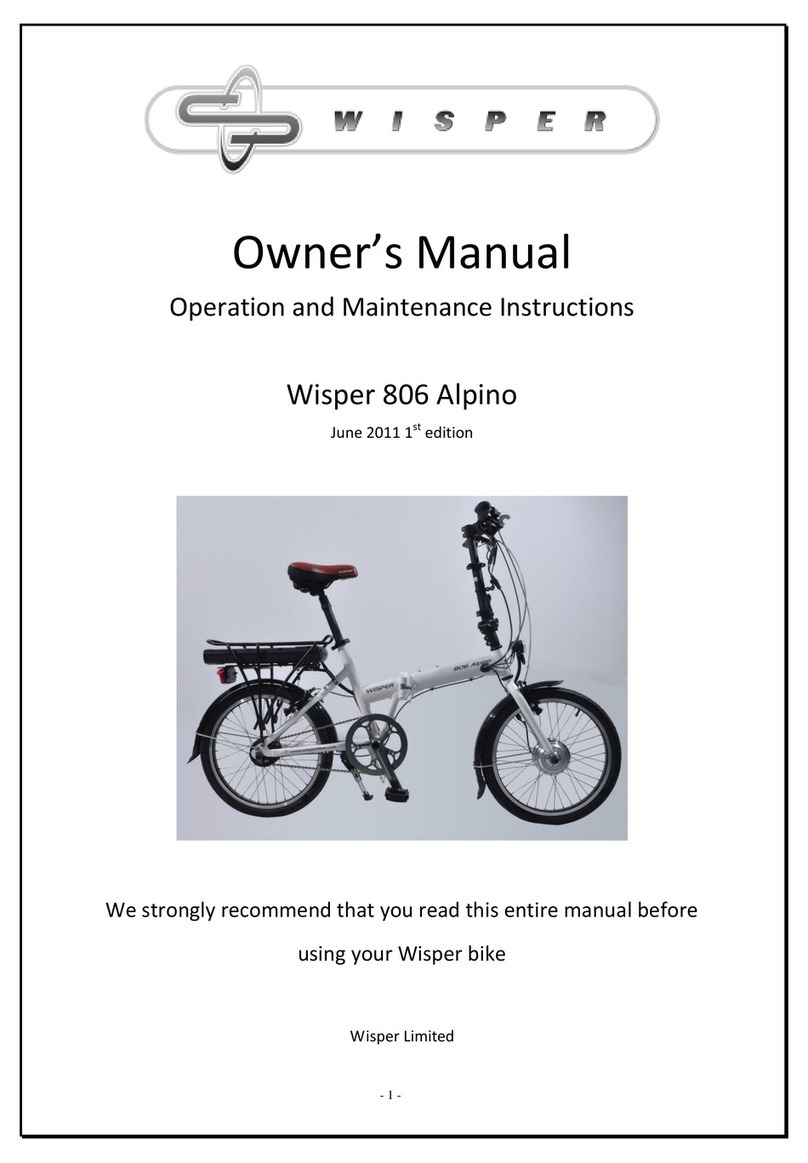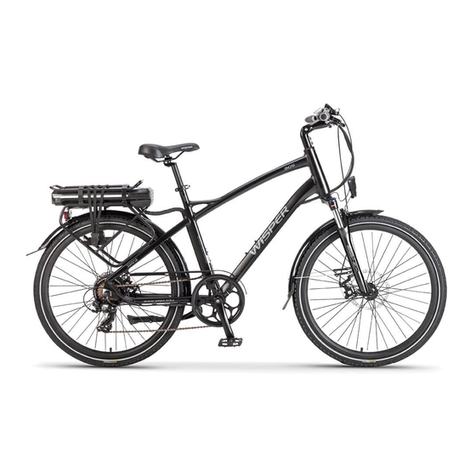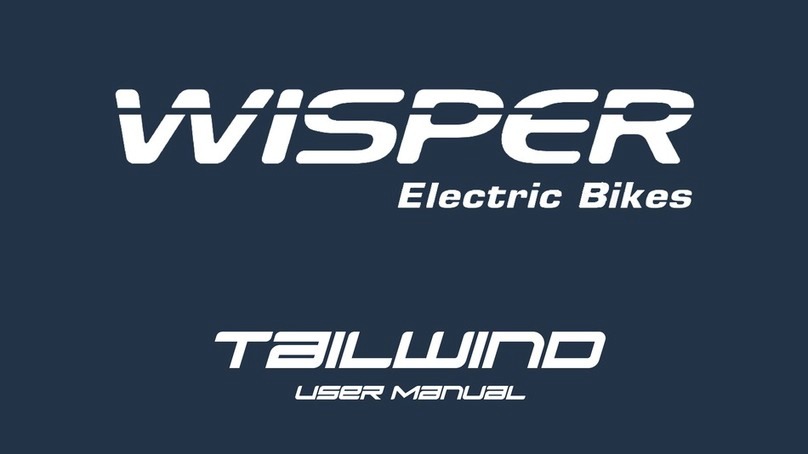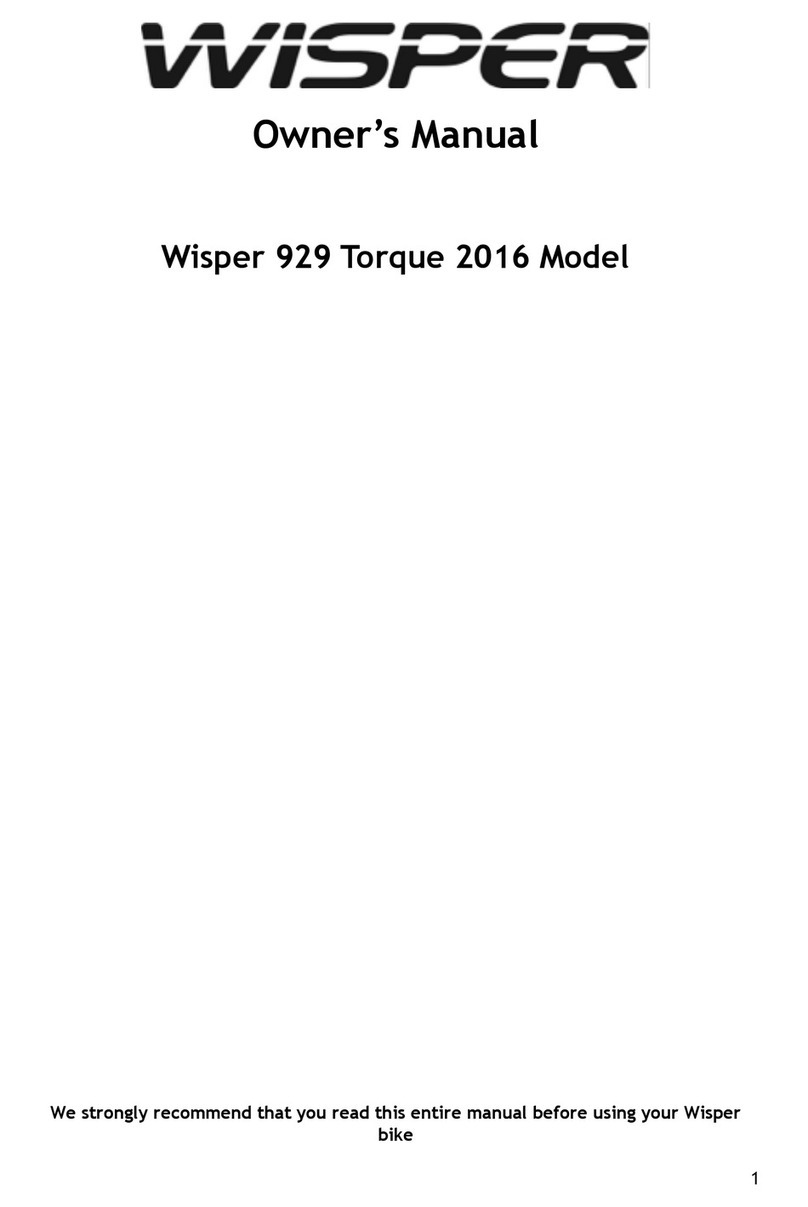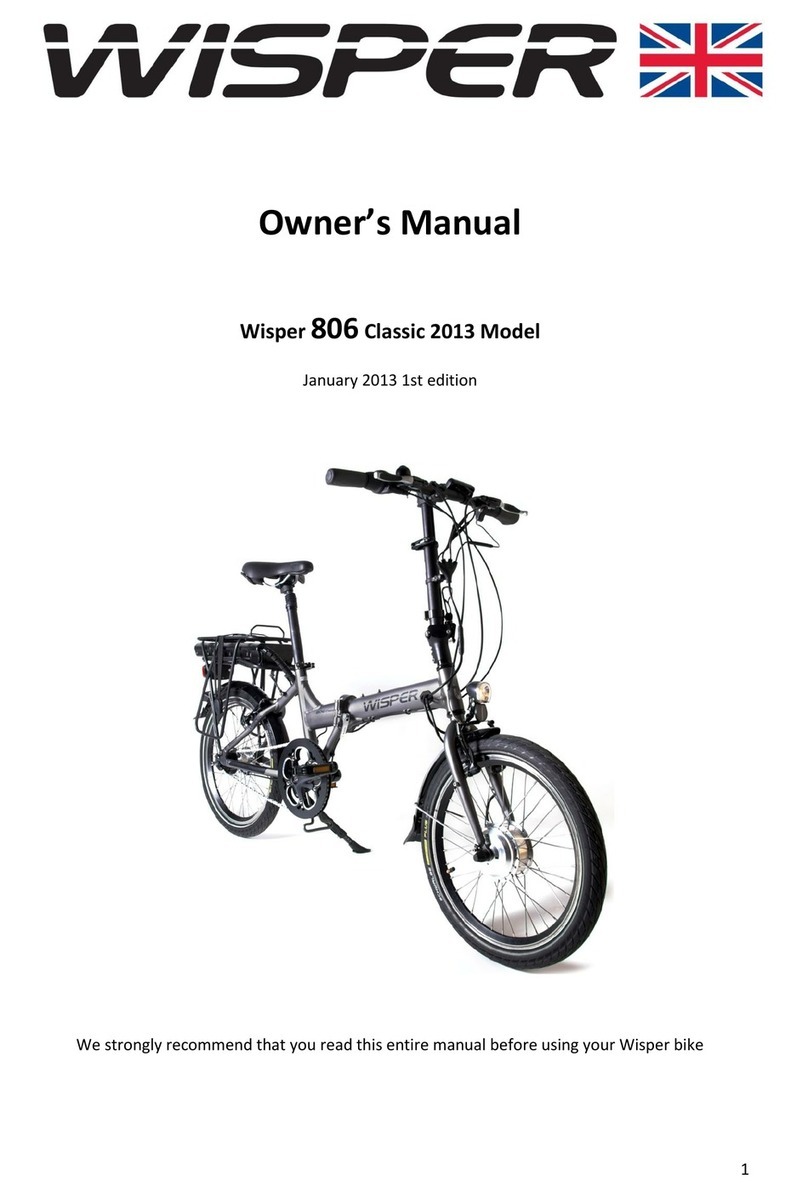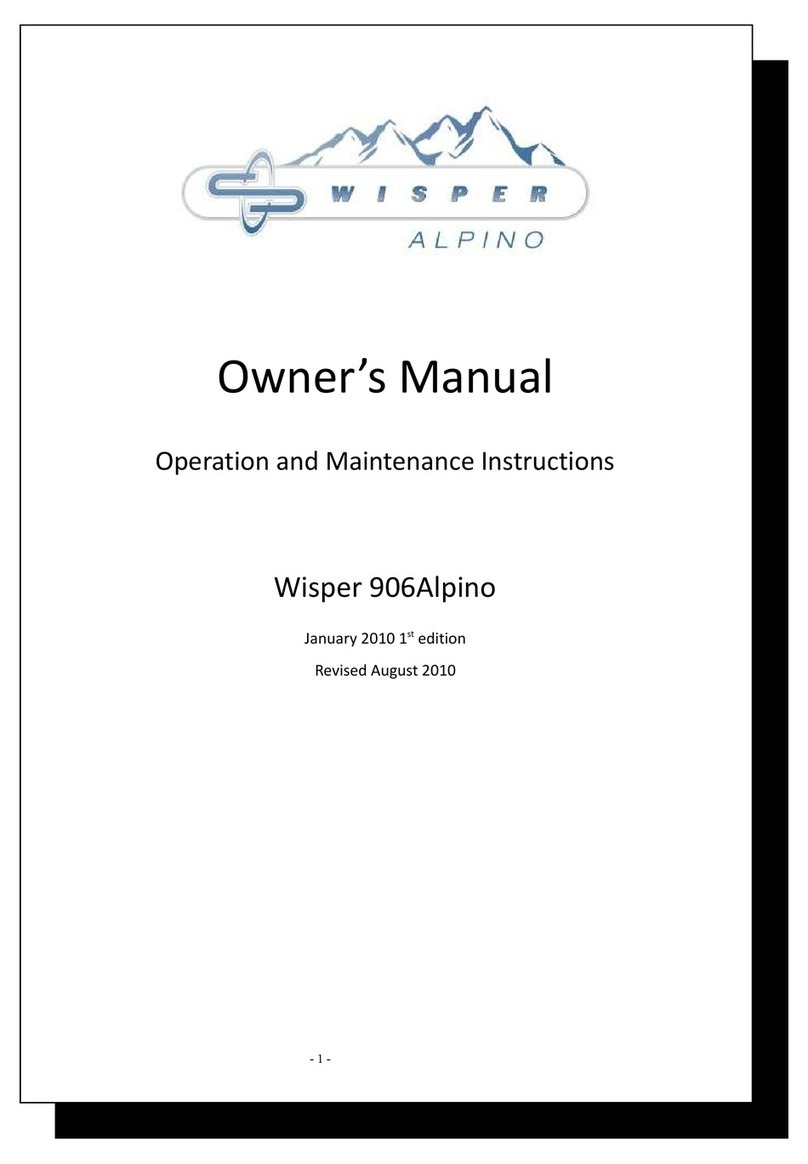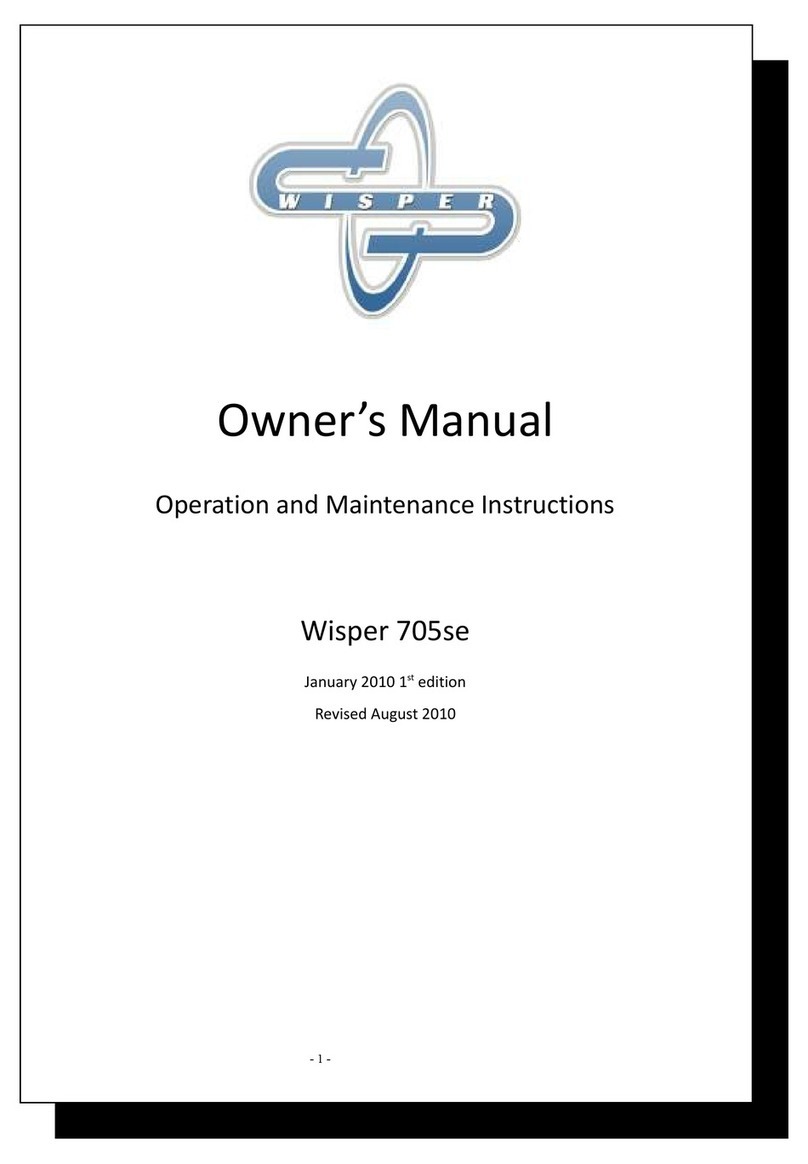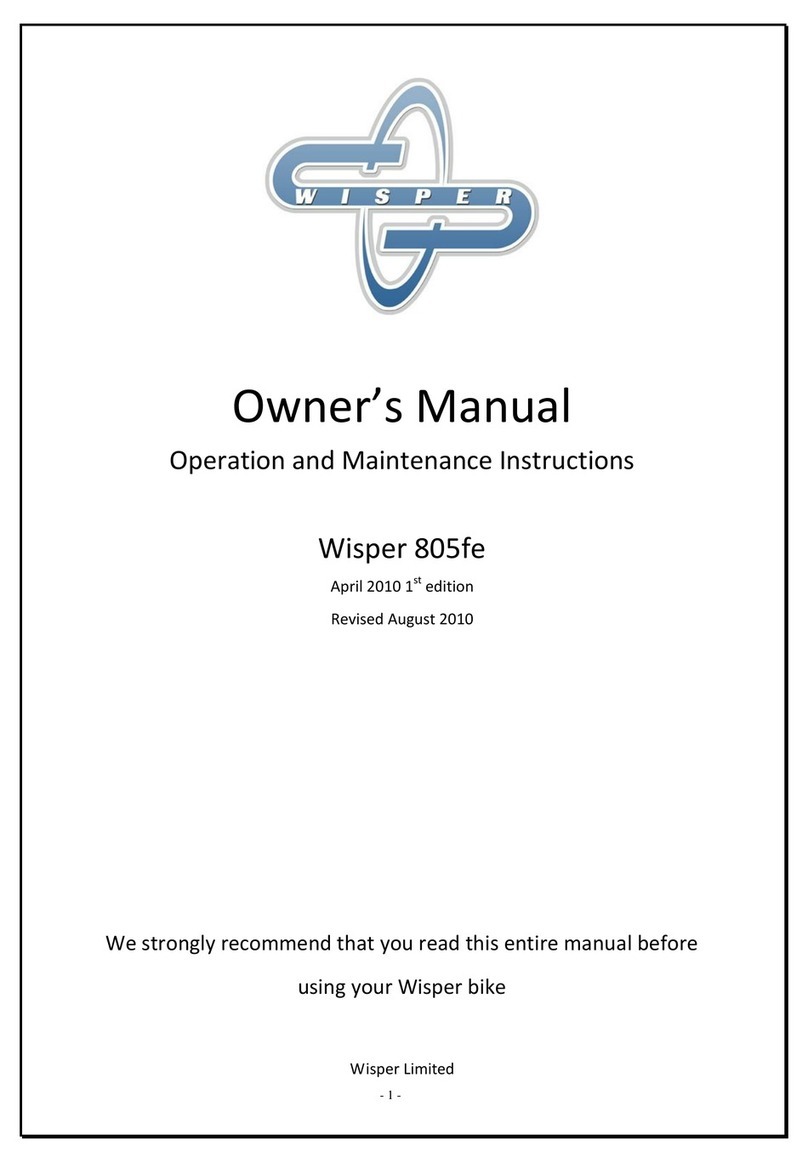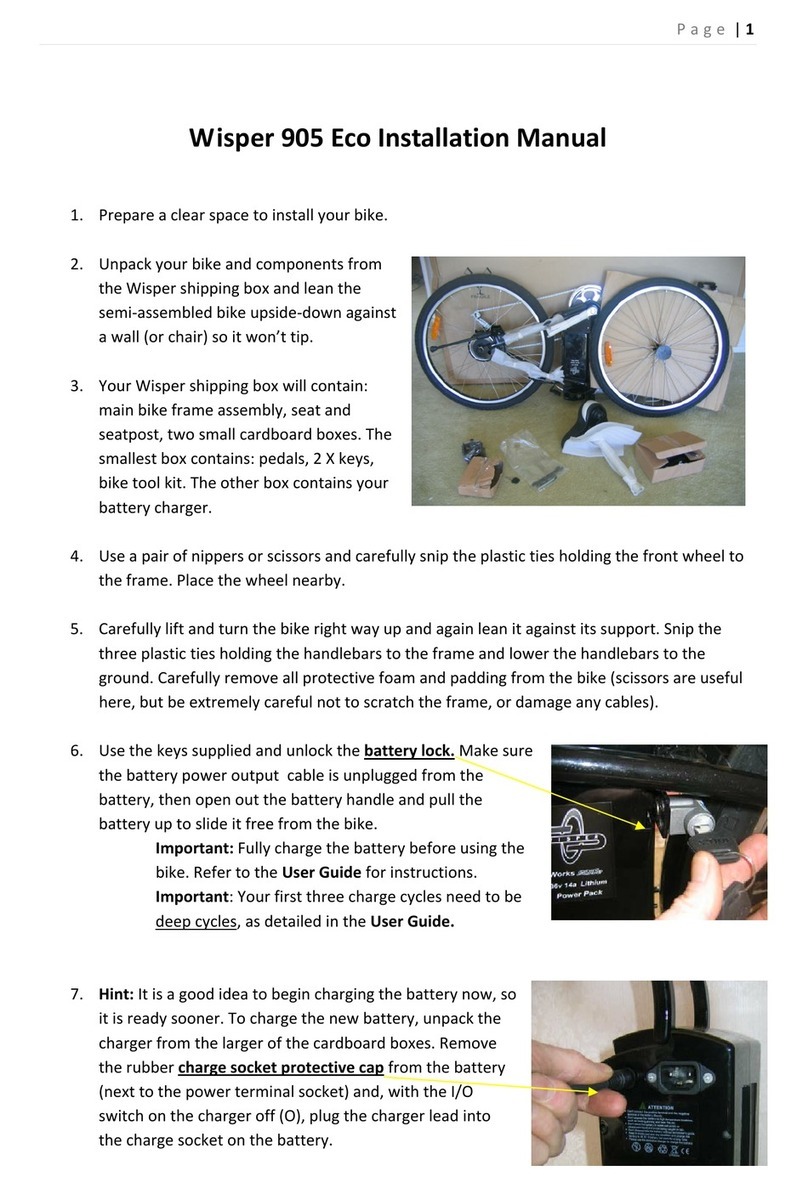ii. Remote Control Service System (RCSS)!
Using the very latest technology we can connect the new Wisper 575Wh battery
and charger system directly to the battery manufacturer’s technical
department’s computer. Software updates will be uploaded to the battery and
charger and system diagnostics will take place. The battery manufacturer will make
recommendations to resolve any issues. In some cases fixes can be made remotely.
All Wisper Stockists will be able to check the condition of both battery and
charger. Information such as the charging history, battery capacity, etc. will be
available on screen.
iii. Phone Charger!
The socket on the battery used for connection to the RCSS can also be used to
charge a mobile phone.
2.4. Recharging your battery
2.4.1 Before charging, make sure the charger is turned off and connect your battery to
the charger at the charging socket. Plug the charger into a mains socket and turn on the
mains socket. A red lamp will light up on the charger indicate the battery is charging.
When the red light turns green, the battery is fully charged. To optimize battery life,
leave the charger connected for a further hour and then turn off the charger and
disconnect it from the mains after charging. Always disconnect the charger from the
mains before disconnecting the charger from the battery. It is possible that the battery
will take up to twelve hours to charge on the first three charges.
2.4.2 When charging the battery, always do so in a well ventilated area.
2.4.3 Do not leave the charger connected to the mains when not in use. !
2.5. Water!
2.5.1 Your electric bicycle is rain and splash proof and can be used in all weathers.
2.5.2 The electrical components of the bicycle, such as motor, battery, and controller,
must not be submerged in water. !
2.6. Maintenance and adjustments !
2.6.1 IMPORTANT! Do not attempt to open the casings of the battery, motor or
controller. It could be dangerous and all warrantees will become void. If you experience
a problem, contact our service department or your Wisper retailer.
2.6.2 Wheel spokes should be adjusted after 300 miles of riding. Handlebar and saddle
tubes should never be raised beyond the maximum permissible, indicated by a safety line
around the tubes. The recommended torque (tightness) of crucial fixings is as
follows:
